Best Potty Training Methods of 2023
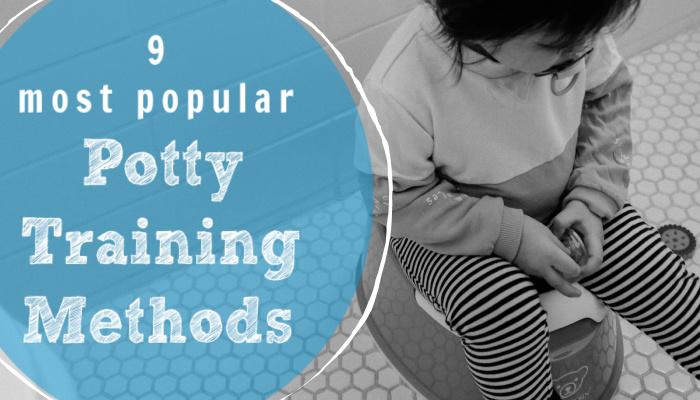
This post may contain affiliate links; please see our terms of use for details.
- Potty training is not a one-size-fits-all undertaking. There are many different approaches and techniques to choose from.
- Potty training can be tailored to your and your toddler’s unique needs.
- Don’t worry if a particular toilet training method isn’t working for you – switching to a new a method is absolutely acceptable!
Potty training is a daunting task, especially if you’re a first-time parent. You may think there is one perfect potty training strategy, but in reality there are multiple proven potty training methods to choose from. There is no universal potty training solution.
While having many options to choose from is usually a good thing, finding the right toilet training program for your toddler can feel stressful and overwhelming when there are so many people advocating for their favorite techniques. However, all of these choices really mean more flexibility for you and your family! Consider your own circumstances when choosing the best training method for your child.
What Are the Best Potty Training Methods?
While “best” is subjective, the most popular and well-known methods are:
- 3 Day potty training
- Oh Crap! potty training
- Naked potty training
- Potty training with underwear
- Elimination Communication
- Child-oriented potty training
- Parent-led potty training
- Potty training with (and without) rewards
- Potty learning
We cover each of these in this article. But how do you choose the right method for your child?
It’s very possible that before having a baby you never had to conduct an interview, but as a parent you may have found yourself interviewing potential pediatricians, caregivers or daycare facilities. If you think about it, any time you need to make a choice for your child, you are putting on the interviewer hat as you ask relevant questions and decide which option is best.
It’s no different with potty training.
There are so many options to choose from, the best approach may be to create a list of questions you can ask to determine your needs so you can decide which toilet training method is the best fit:
- Do you have the time to spend days at home while potty training?
- Does your child have multiple caregivers who all need to be on the same page?
- Will your child be potty training in multiple settings (ie potty training at home and potty training in daycare)?
- Do you have a limited amount of time to train (as in needing to be trained in oder to enter preschool)?
- Are you trying to potty train a stubborn toddler who might be more agreeable when allowed to be involved in the process?
So which potty training method is best? The one that works for you!
3 Day Potty Training
- Great for parents who need to train their kids quickly
- Parent-led training method
- Does not work well in multiple settings
3 Day potty training is a parent-led technique that requires clearing your schedule for three full days. During that time, you will stay home and allow your child to remain diaper-free during the day while you watch for signs that your child needs to go to the bathroom. Signs can include dancing, jumping, rocking, and other behaviors.
Realistic expectations are key during this three day method. It is likely that accidents will occur as your child progresses. You will need to be able to recognize if you need to slow down or pause the method if you are not seeing success. Avoid frustration and punishment if regression does occur. In addition, overnight potty training may still take time.
However, by the end of day three, your child should understand and be able to communicate the need to use the toilet. Most parents find that their child is able to remain accident-free during the day after completing the 3 Day potty training method.
The 3 Day potty training method is a great place to start, especially if you need to have your child trained within a certain time frame.
Oh Crap! Potty Training
- May take longer to train
- Parent-led training method
- Does work well in multiple settings or with multiple caregivers
Oh Crap! potty training is based on the book Oh Crap! Potty Training: Everything Modern Parents Need to Know to Do it Once and Do it Right by Jamie Glowacki. Glowacki recommends approaching potty training in stages and has developed a series of six toilet training blocks.
The concept behind the Oh Crap! potty training method is that each child progresses at their own pace and parents can focus on each block individually, moving on to the next one only when the first has been mastered. This approach can take away some of the stress inherent in toilet training as everything is broken down into simpler steps, but can also take longer to complete since it gives kids lots of time to conquer each block.
In block one, parents introduce their toddler to the toilet with no diapers, underwear, or pants (similar to the Naked Potty training method below). Block two incorporates pants into the equation, but no underwear. Block three focuses on being able to use the toilet when not at home and block four introduces big kid underwear. The fifth block encourages children to initiate going to the toilet themselves and in the sixth block you should be diaper free for naps and bedtime.
Oh Crap! potty training is a long game approach, making sure your child really understands the basics of training without pushing too hard.
Naked Potty Training
- Great for parents who need to train their kids quickly
- Parent-led training method
- Does not work well in multiple settings
Naked potty training, also known as “No-Pants potty training,” involves exactly what it sounds like: your toddler will be pants, diapers, and underwear free. This method can take several days and of course it can also be messy.
In Naked potty training, you will designate an area in the house where your child can “go.” This may be in the bathroom, but can also be a potty chair in the play room or bedroom. Generally, you want the “go” spot to be somewhere easily accessible to your child during the day.
Naked potty training can be successful because your child will be readily aware of accidents and will learn quickly to become in tuned with their body and their need to use the potty. This method can be very effective quickly. On the other hand, it is intense and does require a lot of clean up. While having your child potty train in a few days is fast, it can feel like forever while you are following a naked child around the house watching for signs to take them to the toilet.
This method also requires a caregiver to stay home with the child throughout the training, which can be difficult for working parents and can feel claustrophobic.
Potty Training with Underwear
- May take longer to train
- Parent-led training method
- Does work well in multiple settings or with multiple caregivers
This one is a variation of the naked method, just using underwear instead of going bare-bottomed. In underwear training you would make a quick switch from diapers straight to underwear. When you start with this method, begin at home before venturing on any outings. It may take your child some time to get the hang of it, so you’ll want to be at home in case of accidents. Do your best to remain calm for your child’s sake because there will be accidents with this method. You don’t want to shame your child when they don’t yet have control.
You can put on a training diaper over the underwear for the first couple of weeks as your child acclimates to wearing underwear. They will still know and feel when they’re wet or dirty, but you won’t need to change their clothes or clean up the floor. The American Academy of Pediatrics says children can go right from diapers to underwear. Your child may need to wear diapers overnight, or you may need to help clean them up until they get the hang of it.
One of the benefits of underwear training is that your child will soon learn that they don’t like being wet or dirty. It can help them try to avoid it by going potty sooner. In the beginning, remind your child about every 45 minutes to try to go. Make your child an active participant in the process by having them pick out their own underwear and you can even use special underwear as a reward. By having your child take part, they will be more invested in the process.
Elimination Communication
- May take longer to train, but children may also be trained very young
- Parent-led training method
- Does work well in multiple settings or with multiple caregivers
Elimination Communication, also known as Diaper-Free potty training, is a long-game early toilet training method that requires a lot of hands-on parenting, but pays off in the end. Unlike 3 Day potty training, the Elimination Communication technique can begin in infancy and continues for months until your baby understands the concept and is able to use the potty independently.
Elimination Communication can be a part-time or full-time effort, it all depends on how much time and energy you choose to put into it. You can put your baby on the toilet first thing in the morning or just before bed, or you can watch for their cues to sit on the toilet every time they show signs of needing to go. This spectrum can be great for working parents who are trying to potty train when a daycare doesn’t follow an Elimination Communication approach.
Although Elimination Communication is often referred to as Diaper-Free potty training, that doesn’t mean you can never use diapers. Think of running errands, while Grandma is babysitting, or a long car ride. Diapers can be a great backup during these times.
With this method, the earlier you start, the easier it is. You can watch for potty cues at any age, but most adherents to this method suggest starting as early as 1-3 months old. Taking advantage of clear cues in the beginning can make it easier to incorporate Elimination Communication into your daily life with your baby. Although it’s never too late to practice Diaper-Free potty training, the earlier it is part of your routine, the easier it is going to be to stick to it and move from relying on diapers to knowing when your little one needs to use the toilet.
Child-Oriented Potty Training
- May take longer to train
- Child-led training method
- Does work well in multiple settings or with multiple caregivers
Also known as the Brazelton method, Child-Oriented potty training was developed by pediatrician Dr. T. Berry Brazelton after he noticed that many parents pushed toilet training too quickly and when children were too young. Dr. Brazelton wanted to develop a gentler technique that allowed children to move at their own pace and removed pressures from both parents and children.
The Child-Oriented method emphasizes waiting until your child is developmentally ready for potty training. Signs of readiness include being able to follow directions, dress and undress independently, and showing awareness of soiled diapers. The American Academy of Pediatrics also noes that “training should not be started when the child is feeling ill or when the child is experiencing any major life changes.”
Once ready, Brazelton argues that a potty training method should move slowly and follow the child’s lead. If your child seems wary or upset, pull back and take a break. Start by just introducing the toilet or potty chair and having your child sit on it with clothes on. Later, try sitting on the potty chair with pants off, but don’t expect them to have successes on the toilet right away. Brazelton also suggests taking dirty diapers to the toilet with your child and shaking the contents into the toilet so they can begin to understand what toilets are for before they are actually using it.
Child-Oriented training is very slow and often involves a lot of time off from training, but it can be very effective!
Parent-Led Potty Training
- May take longer to train
- Parent-led training method
- Does work well in multiple settings or with multiple caregivers
Parent-Led potty training might be considered the traditional potty training method for toddlers. It’s a gradual process and it can take weeks or months for your child to achieve complete bathroom independence.
Children often wear disposable pull-ups or lined training pants during this process. As the parent, you would take on the responsibility of recognizing potty indicators and creating a bathroom schedule. When using this strategy, you might choose to implement some form of recognition, such as potty training charts or rewards for successful trips to the bathroom.
There are plenty of products on the market to assist families using Parent-Led potty training, like timers and watches to remind kids that it’s time to use the toilet, as well as fun stickers and reward charts.
Critics of Parent-Led potty training claim that kids who are potty trained with this method are slower to recognize their own bathroom body signals, may take longer to realize when they need to use the potty, and may struggle with nighttime potty training. Additionally, the gradual nature of this process can lead to frustration for parents, which can promote power struggles.
Parent-Led potty training does work well when a child is in the care of multiple caregivers. It’s easy to maintain a routine and schedule that’s created by the adults as opposed to following other potty training methods, especially if your child is in a situation where a single caregiver is responsible for many children.
There are two critical success factors for Parent-Led potty training. First, it’s important that you wait until you recognize signs of potty training readiness in your child before starting this approach. And most importantly, you should remain consistent with your strategy and schedule once you start the potty training process to prevent confusion for your child.
Potty Training Without Rewards
- May take longer to train
- Parent-led training method
- Does work well in multiple settings or with multiple caregivers
It is very popular for parents to use potty training rewards, such as candy small toys, or sticker charts. These rewards can seem helpful when starting potty training, but many parents believe that rewarding toilet successes does have a down side.
To work, rewards must be immediate, consistent, and exclusive. This means your child should get a reward as soon as they have success on the toilet. You should also use a reward every time and only for potty training.
Another issue with rewards is that they aren’t always available outside the house and can make potty training in public bathrooms difficult. Similarly, daycares can’t usually give out rewards for potty successes and babysitters would also need to be on the same page and have rewards available.
Many skeptical parents also worry that accidents may occurs when the rewards stop. Children can’t rely on physical rewards for long and will need to find their own motivation to use the potty eventually anyway.
So, how can you help your child find their own motivation? Positive reinforcement is a great way to encourage behaviors. Lots of praise can be more than enough reward for most kids. Toddlers are also often trying to do things on their own and want to be a “big kid.” Praising your toddler’s independence and “big kid” actions is a great way to encourage successful potty training without relying on rewards.
Potty Training vs Potty Learning
- May take longer to train
- Child-led training method
- Can work well in multiple settings or with multiple caregivers if everyone is on the same page
Potty Learning is a Montessori concept where your child isn’t trained by you how to use the toilet, but rather learns through their own experiences. Potty Learning emphasizes following your child’s cues, allowing them to learn at their own pace, which is why this method is not a quick fix technique. Time constraints are not a part of Potty Learning.
Rewards are also frowned upon with this technique. Since kids are learning how to use the toilet in their own way, the learning itself should be the reward. Your job as parent is to offer support and praise and to assist in any way you can in the learning process, as with clothes they can easily remove themselves or training pants that can help minimize mess but clearly feel wet when soiled.
Attitude is also a big factor in Potty Learning. Be positive and supportive and never get upset about messes. Consider your vocabulary too. “Accidents” may really just be lessons; “dirty clothes” a chance to work on laundry sorting. Remember, Montessori is all about independence and learning opportunities!
FAQs
Do I have to use a potty training method? What if we just wing it?
Assuming you are going to take the lead in training, “winging it” sounds a lot like Parent-Led potty training and can come naturally to a lot of parents. It’s definitely fine to go by your own instincts and to listen to your child’s readiness cues as you potty train. If you think about it, humans have been learning to use the toilet for generations, even before parenting books and websites offered so much toileting advice.
Is it okay to switch from one method to another?
Yes! This process of toilet training is new to both you and your child, so be gentle on yourself and allow flexibility when you can. If a method isn’t working for yourself or your toddler it’s perfectly okay to change tactics. If you are potty training a child with special needs, you may want to take other factors into consideration before choosing another method.
What if none of these potty training methods are working? Can we take a break from potty training altogether?
Yes, that is always an option! The American Academy of Pediatrics points out that “[r]egression is a normal part of the toilet training process, does not constitute failure, and should be viewed as a temporary step back to a more comfortable place.” Some kids might begin to display manipulative behaviors, like wetting themselves on purpose, if they feel frustrated or feel like they are being pushed too hard. In these cases it is often best to just step back and take a break. Let everyone relax and pick up the training again when you and your child are ready.
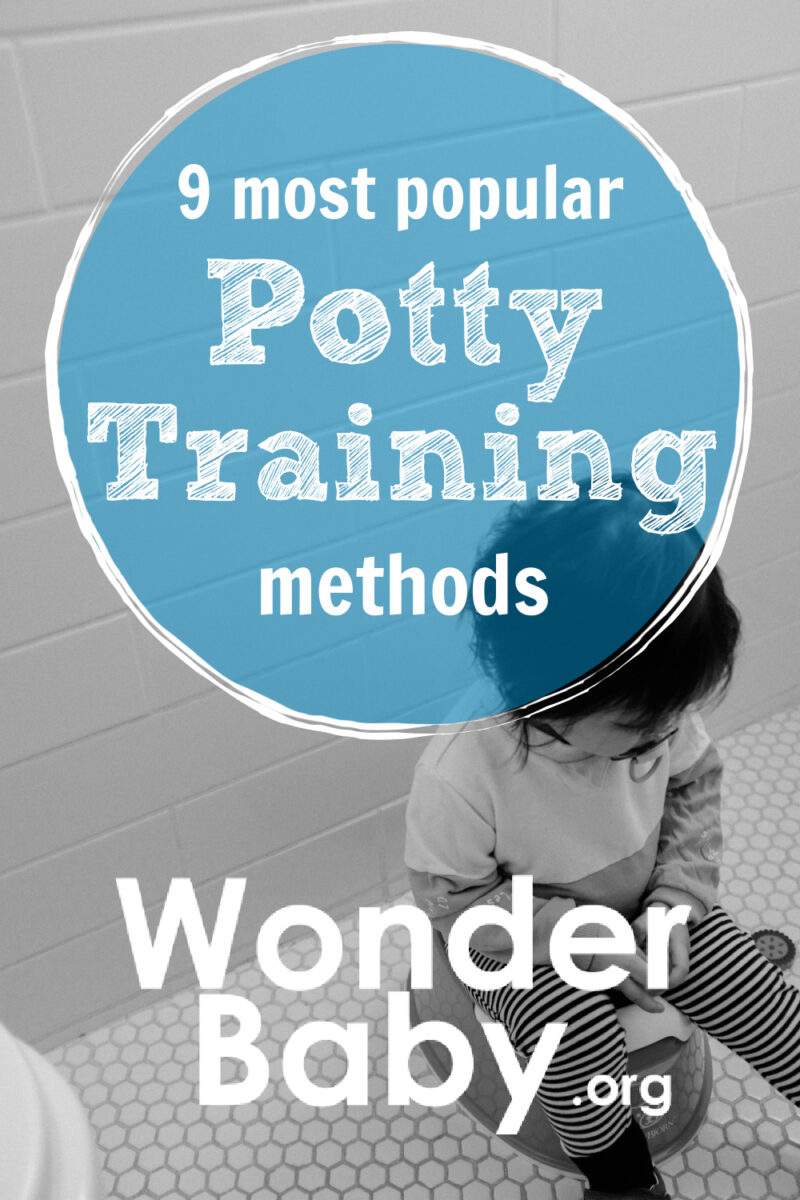
Related Posts
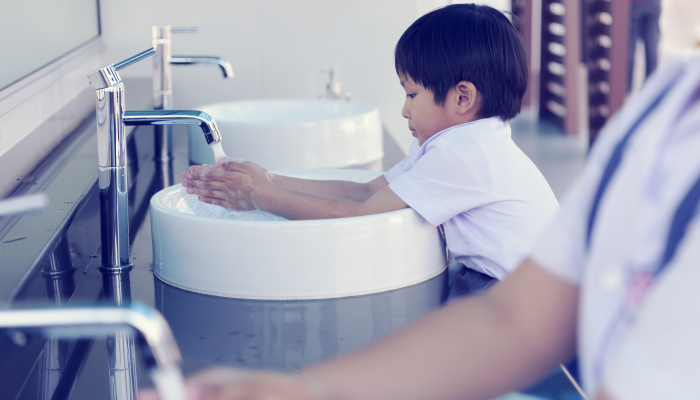
IEPs, Potty Training
7 Sample Toileting IEP Goals
Toileting IEP goals should address the specific needs and abilities of each child. Be flexible and patient as your child works on their toileting skills.
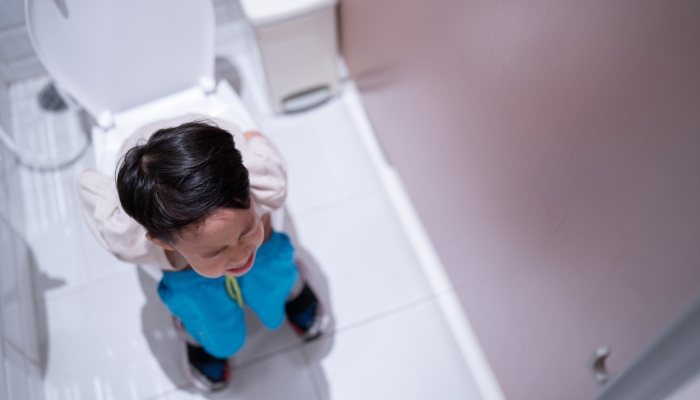
Potty Training
How To Deal With Constipation When Potty Training
Constipation is common amongst children of potty training age. Many children suffer from potty training constipation, but there are things you can do to help.
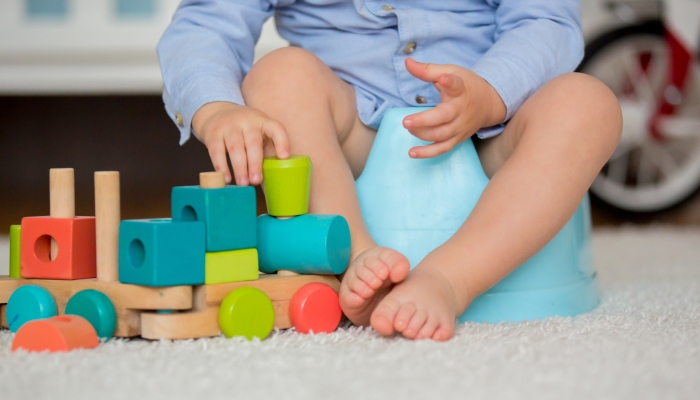
Potty Training
5 Potty Training Games To Make Potty Training Fun
Learning to use the toilet doesn’t have to feel like hard work. There are lots of potty training games you can play with your toddler to make learning fun.